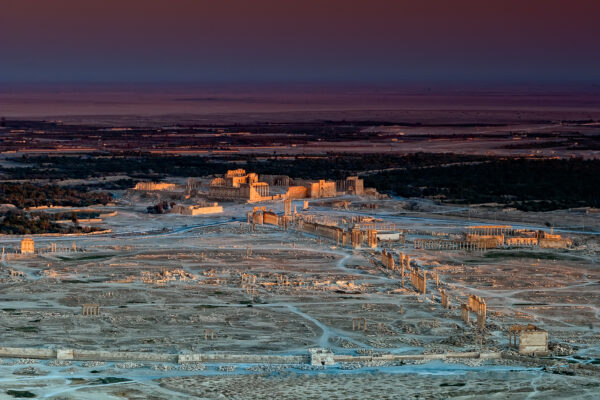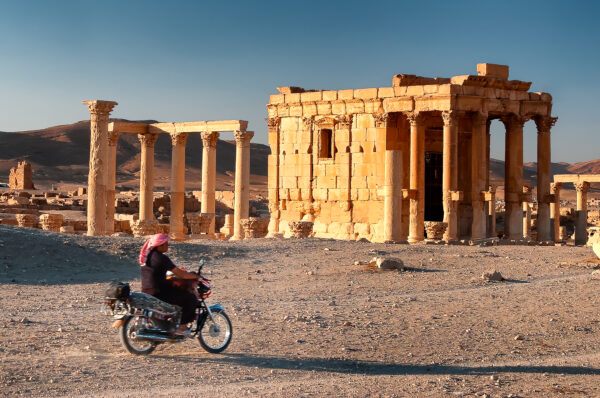
Apart from the humanitarian crisis, the destruction of the ancient site of Palmyra has been one of the worst consequences of the Syrian war.
Palmyra, how it was
In the photo above you can see the beauty of Palmyra a few years ago. An astonishingly well preserved ancient city in an oasis in the middle of the desert.
By pure chance, 4.000 years ago this oasis became a stopping point for the caravans travelling the Silk Road before getting to the Mediterranean ports.
And this was the beginning of its grandeur.
But the isolated caravanserai between the palms (Palmyra, means City of Palms) rose to prominence only during the first century BC, during the Roman Empire.
A bit of history
The village developed into a beautiful and rich city. Spices, silk and ivory coming from the East and statues and glassworks coming from the West met and were traded right here.
The golden age of Palmyra lasted about 4 centuries. It was declared a free city by the Roman Emperor Hadrian and many beautiful temples were built, including the temple honouring Baal.
As the Roman Empire faced internal political instability, Palmyra took the opportunity to declare its independence. It happened through a revolt led by Zenobia, who then became queen of a vast empire encompassing Syria and parts of Egypt.
When Roman emperor Aurelian retook the city, the powerful queen was taken to Rome and Palmyra began to decline in prominence.
For years, until the blast of the Syrian crisis in 2011, Palmyra has been visited by hundreds of thousands of visitors. They enjoyed the beauty of those majestic ruins, very well preserved in the dry desertic climate and standing proudly against a yellow and green landscape.
The war
But Palmyra has been a battleground in 2013 and was damaged by the clashes.
Even before, it was damaged by the Syrian army. In 2012 it deployed in the area and made various damages to the site. Removed soil, dug trenches, built roads within the archaeological area, removed and displaced ancient stone blocks in the centre of the archaeological site for defensive purposes.
The temple of Baal stood proudly for about 2.000 years, but humans eventually got rid of it.
Several parts of it were damaged by bombings in 2013. Later the Islamic State fighters destroyed it with dynamite. The massive columns lie now on the ground, and the same fate has faced the nearby Temple of Baalshamin.
Destructions
The UNESCO World Heritage Site has been heavily damaged and will never be the same.
Those photos are a relic of the past and depict how it was.
Did you like it? For more beautiful photos and travel stories, just use the menu above and browse the site. Do you know that you can send any of my images as an e-card?
Just choose your favourite image, press the e-card- button down on the right and that’s it, the pic is ready to be sent to your loved ones! Just give it a try, it’s fun and it’s free!
Would you also like to read all my upcoming travel stories? Just click here and subscribe to my newsletter.
I will mail you only when I release a new article. Your information is 100% safe and never shared with anyone





